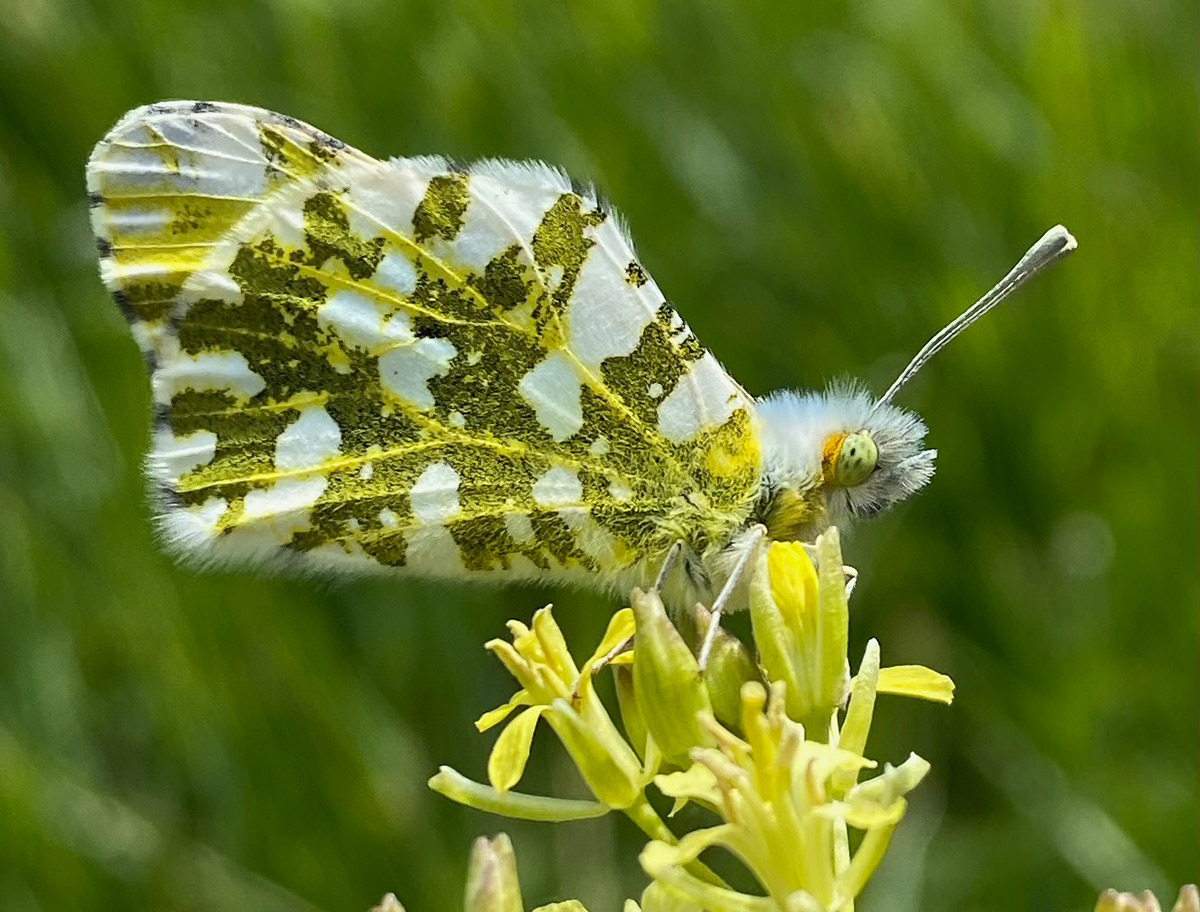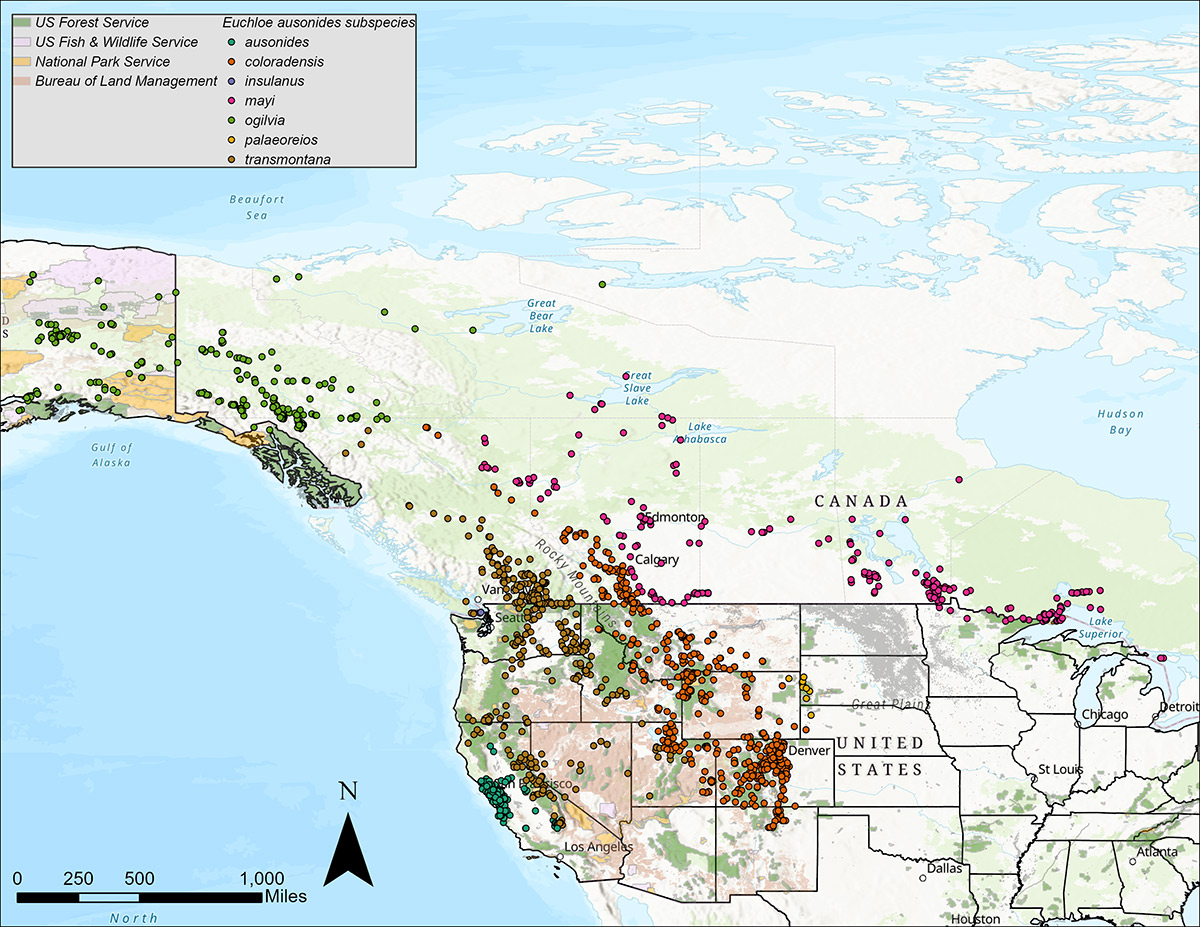The large marble butterfly is found in open habitats across 16 states ranging from Alaska to southern Colorado and as far east as Michigan. Despite its widespread distribution, recent studies using long term monitoring data have ranked the large marble as one of the western butterfly species most at risk of extinction in the next 50 years. Large marble populations are threatened by widespread habitat degradation, introduced predators, pesticide exposure, effects of climate change, and inadequate regulation across the states in which it is found.

California’s large marble butterfly is the most imperiled
Of critical concern is the type subspecies of the large marble butterfly, Euchloe ausonides ausonides, which is already absent throughout much of its former distribution and is in danger of extinction in almost the entirety of its present range. Once present throughout each county in the Sacramento Valley and San Francisco Bay regions and common in both urban and rural locations, recent observations are almost entirely absent from the Sacramento Valley (in some places, not recorded since at least 2005), and remaining E. a. ausonides populations are relegated to beachfront areas along the San Francisco Bay and in the foothills of coastal ranges and the Sierra Nevada. Multiple long-term butterfly population monitoring sites have documented the disappearance of this butterfly subspecies while the occurrence of E. a. ausonides in museum and photographic records in multiple regions has plummeted by over 80%.
The Xerces Society is petitioning the U.S. Fish & Wildlife Service to protect the E. a. Ausonides large marble type subspecies as Endangered in order to protect remaining populations from vanishing entirely. If listed, this would be the second subspecies of this butterfly to be protected as Endangered under the ESA. The island marble, Euchoe ausonides insulanus, was petitioned in 2002 and again in 2012, and received protection and critical habitat designation in 2020.
We are requesting that five additional subspecies of the large marble be protected as Threatened, which allows for more flexibility and may only include a smaller set of restrictions tailored to the activities and areas that are most critical to the declining species. Opportunities exist for farmers, ranchers and private land owners to contribute to the recovery of this species with conservation plans and safe harbor agreements.

About large marble butterflies
Large marble caterpillars feed on various plants in the mustard family, and preferred habitats for the butterfly include grasslands and open meadows along with streamsides, berms, desert washes, beaches, canyons, sagebrush steppe, montane slopes, open tundra, and weedy flats. Adults are medium-sized butterflies known for the complex of green swirls with white spots (“marbling”) across the entire hindwing on the undersides. As a widespread and historically common species, the large marble butterfly is an important part of western landscapes, serving as an herbivore of numerous plants and as a food source for an array of other invertebrates, reptiles, amphibians, birds, and mammals.
Large marble butterflies have been recorded across most of the West and upper Midwest, including in southern and eastern Alaska, central and northern California, Colorado, Idaho, Montana, western Nebraska, central and northern Nevada, northern New Mexico, western North Dakota, northern Minnesota, Oregon, western South Dakota, Utah, Washington, and Wyoming, and the Isle Royale National Park in Michigan. While this species has been recorded on federal, state, and regional conservation lands, there are no species-specific management activities aimed at protecting it. In addition, the habitat protection allotted from these managed areas cannot protect caterpillars and adults from emerging threats like increasing temperature or decreasing precipitation trends expected across much of the western United States. ESA listing for the large marble butterfly, especially in California, is needed to protect this butterfly from becoming a permanent victim of the dangers butterflies face across western landscapes.
Learn More
- Read the ESA petition
- Learn more about what a petition for the large marble means for farmers, ranchers, scientists, and others




